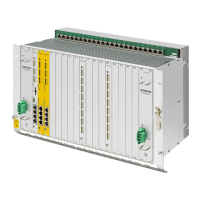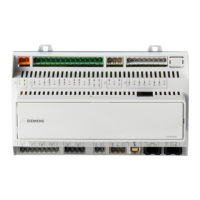Basic logic functions: Mode group, channel, program operation, reset response (K1)
Function Manual, 11/2006, 6FC5397-0BP10-2BA0
3
Table of contents
1 Brief description......................................................................................................................................... 7
2 Detailed description ................................................................................................................................. 11
2.1 Mode group..................................................................................................................................11
2.1.1 Mode group Stop .........................................................................................................................15
2.1.2 Mode group RESET.....................................................................................................................15
2.2 Mode groups ................................................................................................................................16
2.2.1 Monitoring functions and interlocks of the individual modes .......................................................22
2.2.2 Mode change ...............................................................................................................................23
2.3 Channel........................................................................................................................................24
2.3.1 Global start disable for channel ...................................................................................................28
2.4 Program test.................................................................................................................................29
2.4.1 Program execution without setpoint outputs................................................................................29
2.4.2 Program execution in singleblock mode ......................................................................................31
2.4.3 Program execution with dry run feedrate.....................................................................................34
2.4.4 Skip part-program blocks .............................................................................................................35
2.5 Block search.................................................................................................................................37
2.5.1 Sequence for block search of Type 1, 2 and 4 ............................................................................38
2.5.2 Block search in connection with other NCK functions .................................................................40
2.5.2.1 ASUB after and during block search............................................................................................40
2.5.2.2 PLC actions after block search ....................................................................................................41
2.5.2.3 Spindle functions after block search ............................................................................................42
2.5.3 Automatic start of an ASUB after block search............................................................................43
2.5.4 Cascaded block search................................................................................................................44
2.5.5 Examples of block search with calculation ..................................................................................46
2.6 Block search Type 5 SERUPRO..................................................................................................50
2.6.1 REPOS.........................................................................................................................................58
2.6.1.1 Continue machining after SERUPRO search target found..........................................................58
2.6.1.2 Repositioning on contour with controlled REPOS .......................................................................69
2.6.2 Acceleration measures via MD ....................................................................................................72
2.6.3 SERUPRO ASUP ........................................................................................................................73
2.6.4 Selfacting SERUPRO ..................................................................................................................76
2.6.5 Inhibit specific part of the program in the part program for SERUPRO.......................................78
2.6.6 Special features in the part-program target block........................................................................82
2.6.6.1 STOPRE in the part-program target block...................................................................................82
2.6.6.2 SPOS in target block....................................................................................................................83
2.6.7 Behavior during POWER ON, mode change and RESET...........................................................83
2.6.8 Special features of functions supported during SERUPRO.........................................................84
2.6.8.1 Travel to fixed stop (FXS) ............................................................................................................84
2.6.8.2 Force Control (FOC) ....................................................................................................................85
2.6.8.3 Synchronous spindle....................................................................................................................85
2.6.8.4 Couplings and master-slave ........................................................................................................86
2.6.8.5 Axis functions...............................................................................................................................89
2.6.8.6 Gear stage change ......................................................................................................................91
2.6.8.7 Superimposed motion..................................................................................................................91

